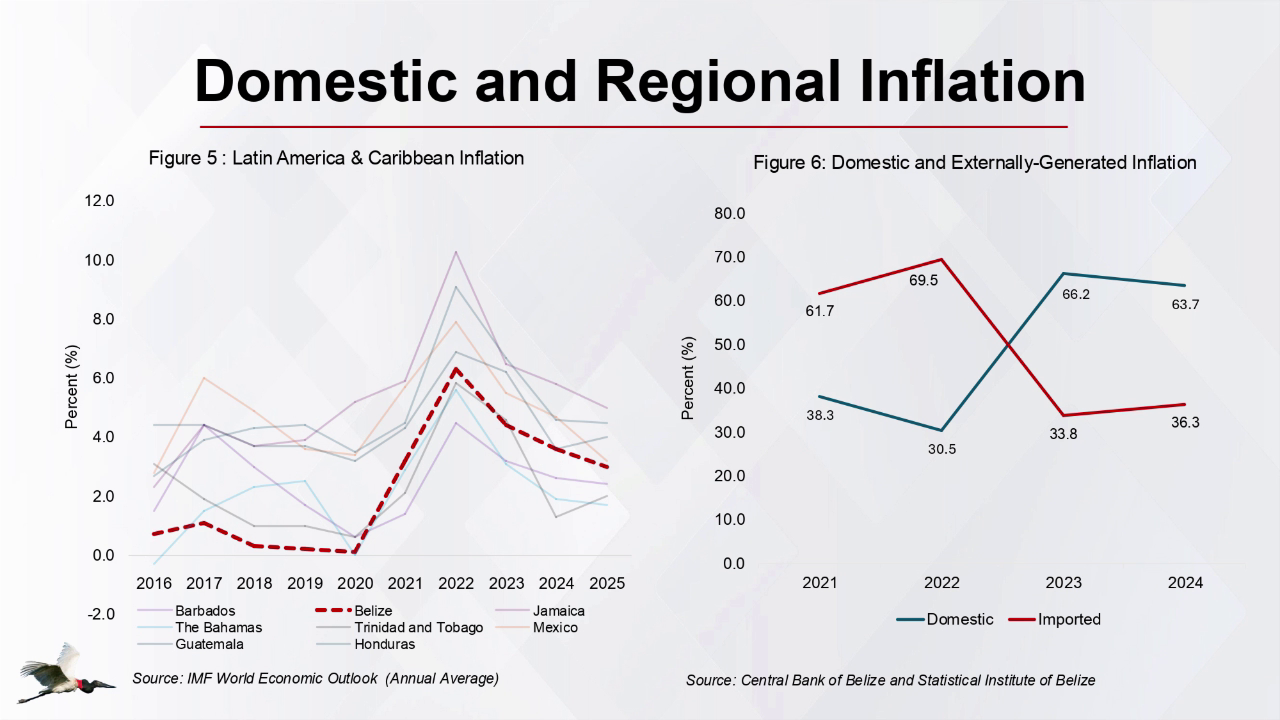High Cost of Food Locally Now Main Driver of Inflation
Despite the significant post-pandemic boost in the country’s G.D.P., Belize is still wrestling with inflation. However, there’s been a shift in what’s driving this inflation. Previously, Belize was importing inflation. Now, according to the Central Bank, over sixty percent of Belize’s inflation is influenced by domestic prices, particularly the cost of locally produced food.

Kareem Michael
Kareem Michael, Governor, Central Bank
“Inflation has retreated from its 2022 peak of six-point three percent. We are at the red dotted line, to three-point six percent. It is expected to dip further to around three percent below in 2025. This range may be the new normal, two to three percent. Inflation experience has not been unique to Belize, but all countries have grappled with higher inflation since 2021. We see that in 2021, and 2022 inflation was largely externally driven, imported through fuel and other imported food items. This accounted for sixty-five percent of inflation. This trend flipped in 2023. With increases in the prices of domestically produced food items alone contributing to forty-four-point two percent of inflation. Adding, in services and domestically generated inflation accounted for sixty-two percent of inflation in 2023. This will persist in 2024 with the domestic component largely reflecting local food cost, restaurant food cost, and to a lesser extent home rental costs contributing to sixty-three percent of total inflation.”







Facebook Comments